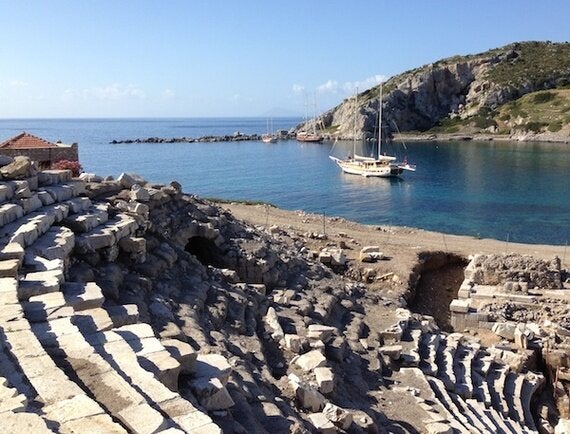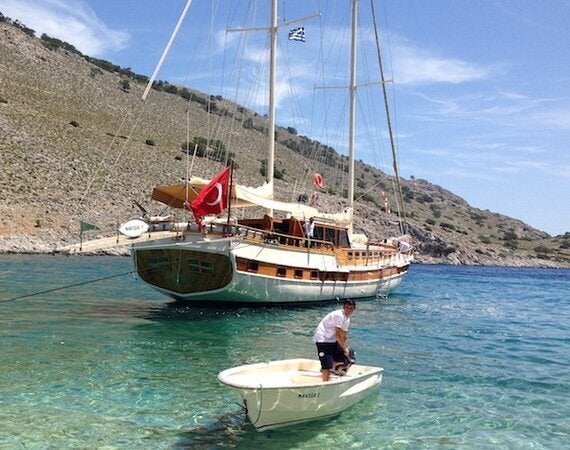
The Greek island of Tilos is firmly off the tourist map. With a year-round population of less than 200, its biggest settlement consists of a few dozen whitewashed buildings huddled around the tiny port. Outside one of its few shops was a rack of postcards with views of the island from the 1970s.
The elderly shopkeeper wandered out slowly to greet us. "First time in Tilos?" he asked.
He pointed to the postcards. "This is how the island used to look." We peered at the sun-bleached images, their corners bending with age, then gazed back at the tiny square where half a dozen men nursed glasses of raki. The only sound was the slap of waves on the small fishing boats in the harbour.
"Not much has changed then," I suggested.
Also moored at the harbour was our boat, the Naviga I, a traditional Turkish gulet, its immaculately polished wood gleaming in the late afternoon sunlight. We were on a week-long sailing cruise of the Greek islands, visiting islands like Tilos that are too small for the big cruise liners, and with only irregular ferry connections to larger islands in the Dodecanese.
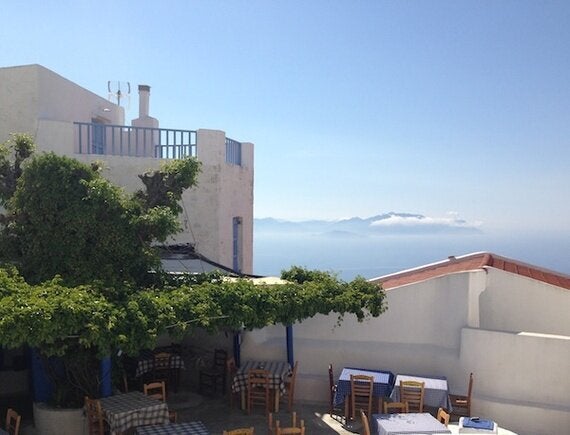
With just 12 passengers and a well-trained and tireless crew of four, the Naviga I is the perfect vessel to explore these idyllic backwaters. By day we would sail from one island to the next, stopping for lunch and a swim in a deserted bay with clear turquoise water. By late afternoon we would be exploring a harbour town before returning to the boat for cocktails on deck and a three-course dinner of simple fresh Mediterranean fare.
Dozens of gulets operate out of the busy Turkish port of Bodrum, most of them offering week-long cruises along the Turkish coast, exploring Bodrum peninsular and the beautifully rugged and undeveloped Datca peninsular to its south. Although sailing to Greece involves negotiating passport control, the distances are easily manageable. The islands of the Dodecanese - fought over for several thousand years by rival civilisations - lie almost within touching distance of the Turkish coast.
Our cruise - four nights in the Greek islands, two on the Datca peninsular - was operated by SCIC Sailing, a small firm based in Amsterdam which operates just four gulets. It prides itself on being one of the few companies of its type that travel under sail. These days, most gulet captains simply switch on the motor; many crews have never even learned to sail.
The downside of sailing is that you are at the mercy of the wind. Itineraries are sometimes changed at the last minute. Passengers must embrace a certain spirit of capriciousness and adventure.

We were only an hour out of Bodrum's busy harbour when a pair of dolphins swam alongside the boat, ducking and diving beneath the bow. That was capriciousness at its best.
First port of call was Kos Town, where the harbour is overlooked by a castle built by the Knights of St John. Although popular with tourists, it's an interesting unhurried town with Greek and Roman ruins interspersed between early 20th-Century Italian buildings. There's a small market and a gnarled tree which is said to be where Hippocrates, the island's most famous son, sat and wrote down the foundations of modern medicine.
Next day we set sail early to the island of Nissyros, a lush volcanic cone that has grown rich on the proceeds of pumice and obsidian, which are quarried from a neighbouring island. When we arrived at 9am in the tiny harbour, ours was the only boat.
We took a bus up the steep narrow road that switched back and forth through forests of oak, fig and almond trees, rising to the lip of the crater 450 metres above sea level. The vast volcanic bowl was laid out below us, in the centre three calderas that are still mildly active.
A €2 entry fee lets you walk down a steep stony path into one of the calderas, an unworldly scene where the rock faces are streaked with yellow sulphur, hot mud bubbles menacingly and clouds of steam gush from fissures in the ground. It's like a set from Star Trek, and stinks like a chemistry experiment.
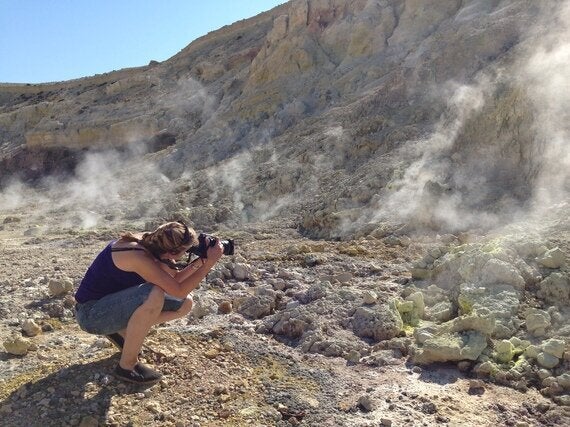
Overlooking the caldera is the small hamlet of Nikia (pop. 40) which clings to the lip of the cone. It lay in ruins until the 1980s when the socialist government encouraged expats to restore their old family houses in exchange for tax breaks.
Today it looks like the archetypal Greek mountain village, all whitewashed houses, blue-painted shutters, winding narrow streets and cats dozing in patches of shade. In the tiny square overlooked by a handsome Orthodox church and a taverna dating back to the 1920s, we knocked back tall glasses of soumera, a delicious local milky-white drink made with bitter almonds.
As we sailed out of Nissyros the day trippers from Kos were just arriving, several hundred tourists spilling from a pair of creaking car ferries. It was hard not to feel smug as we sprawled out on cushions, glasses of chilled wine in hand.
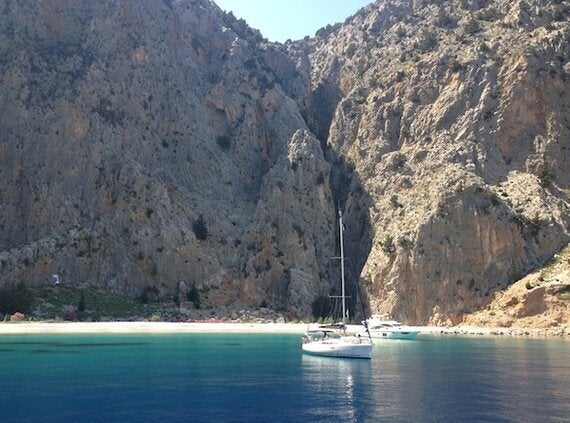
Next stop was the island of Symi where we lunched in a perfect bay encased on three sides by sheer cliffs. In the late afternoon we sailed into the main harbour, Yialos, where hundreds of pastel-painted neoclassical houses spill down the hillsides to a horseshoe-shaped fishing harbour. It's an impossibly pretty setting that understandably attracts a couple of thousand daily visitors. Fortunately, they don't stay long and by the time we dropped anchor the day trippers had all vanished.
With the crew enjoying a night off, we found a backstreet taverna, O Meraklis, where we feasted on stifado, imam, white beans, grilled cheese, tomato balls, aubergine salad and the tiny local Symi shrimp. With wine the bill came to around €15 per person.
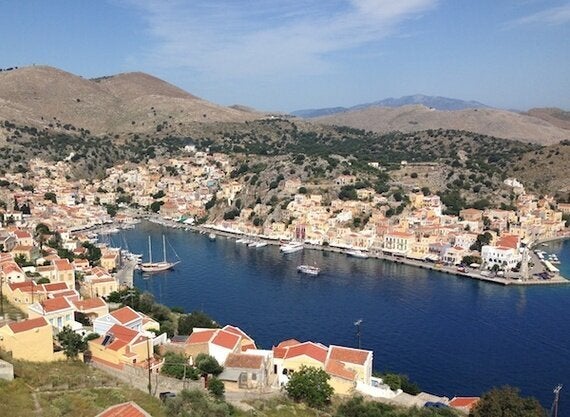
Our last two nights were spent on the Turkish coast, sheltering in small pretty bays where we swam in the clear water and lazed on deck. One evening the crew laid out a barbecue on a sheltered beach - complete with cushions, low tables and tea lights - under a full moon.
Next morning, as we set off early to get back to Bodrum, I got up early to witness a spectacular sunrise exploding over the rippling waters of the Aegean. If there's a better way to explore the coastlines of Greece and Turkey, I'm dead keen to know about it.
* Mark Hodson is editor of 101 Holidays. All photographs © Mark Hodson 2014
